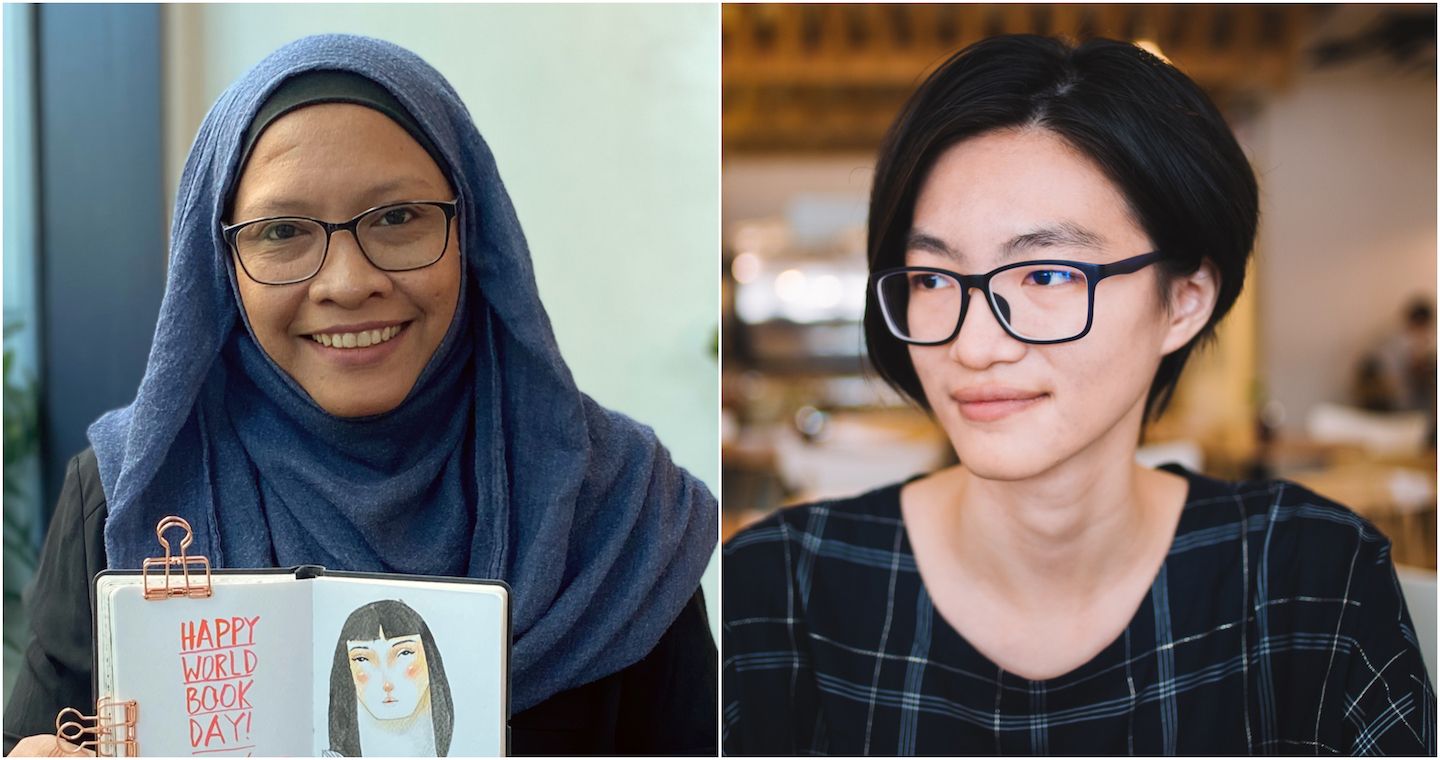
Emila Yusof (left) and Charis Loke are prominent illustrators in the literary scene.
While strolling through the aisles of your favourite book store, oftentimes you'll pick up a book simply because the cover is appealing. The cover is one of the initial touchpoints that shapes the readers’ first impression of a book, which makes it a significant marketing tool. Yet, more often than not, illustrators in traditional publishing have experienced inequitable treatment, from uncredited artworks to unreasonable bargain prices.
Though consumers are becoming increasingly more visual, the appreciation for visual art is not advancing at the same rate. It’s a fight most artists can relate to. But this circumstance is felt more intensely by those whose illustrations play a larger role, such as in picture books.
For illustrator and author Emila Yusof, it has been a decade-long journey of creating children’s books. After befriending a few children’s book illustrators, she decided to try her hand at it. Since then, the 50-year-old has written and illustrated for almost 60 titles, including children’s story, colouring and poetry books.
img_1434.jpg
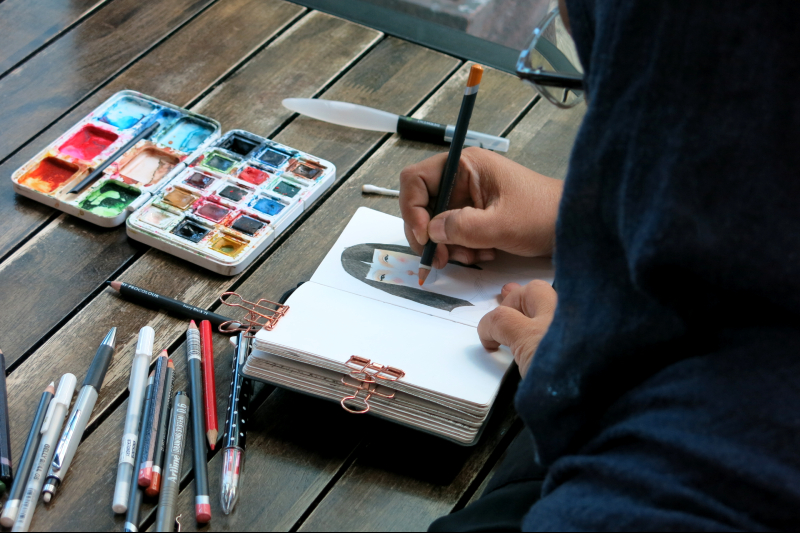
“Visuals are very important because children have short attention spans,” says Emila. “My illustrations sometimes go beyond the text. I put extra things they can look for, like a cat behind bushes or insects for them to point out.”
In actuality, her work serves as a form of early education. In My Mother’s Garden — inspired by Emila’s actual mother’s garden — there is a glossary for all the names of the flowers illustrated in the book so children can look them up.
“I think illustrations give add-on value to the book,” says Emila. “Most people are drawn to illustrations first.”
However, like all good things, good illustrations take time. Emila needs to draw more than 20 illustrations for a single book — a process that could take weeks or months to complete.
img_1468.jpg
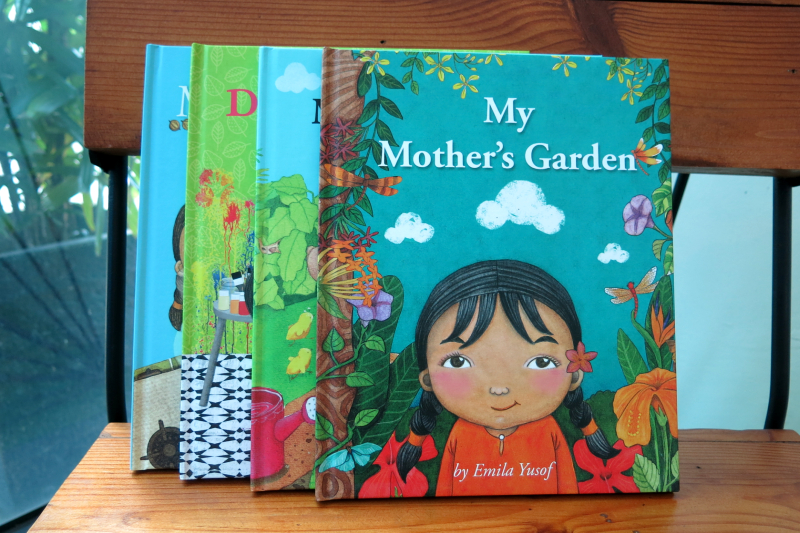
“It is very tiring,” she admits. “But I do it because of passion. Sometimes I don’t get advance royalty or I would have to wait for a year.”
The lack of value recognition is prevalent in the Malaysian literary scene. “People here want cheap books which are on offer,” says Emila. “If there are sales for up to 70%, they will buy. But for my book, which is RM30, they have to think many times.” But when you undersell the book, you devalue the skill.
Local authors themselves struggle to showcase their works because major bookstores tend to push for international booksellers and authors. It’s only if you make it on the international podium that your books will be read by the masses.
In order to gain exposure, Emila has had to bring free copies to give away when she attended book fairs overseas. She does the same when she visits libraries. Now, some of Emila’s children’s books are catalogued in libraries in Frankfurt, China and Taiwan. She's also one of the contributors of Brooklyn Art Library’s Sketchbook Project.
box_library.jpg
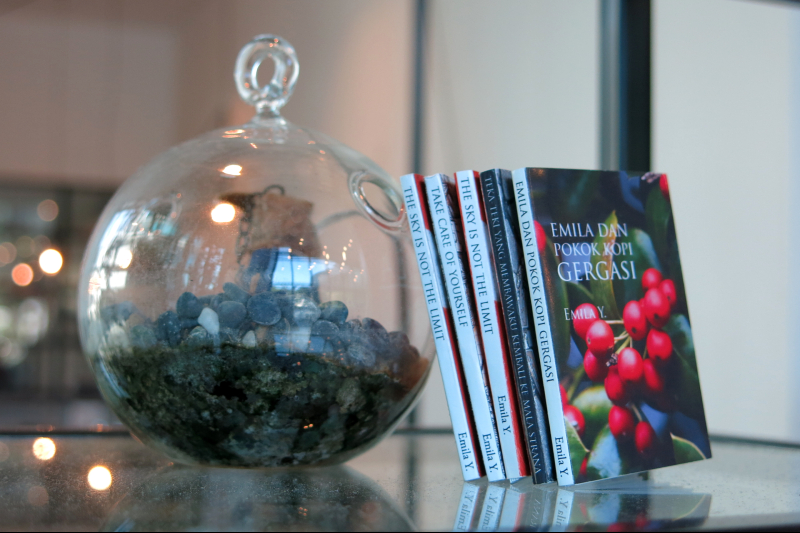
Currently, Emila is taking a break from illustrating and focusing on more project-based work. Apart from painting commissioned artworks and producing zines, she is busy assembling books for her Box Library Project 2020, which essentially features miniature books in a small bookcase made out of plywood.
“I’m asking my friends to contribute to the library too,” says Emila. “My aspiration is to have the Box Library in all cities in Malaysia. It is also good for budding authors because they can put their work in small form to test the market.”
Illustrating for the modern times
Artists have a way of using their imaginations to conjure images that words leave out. For Penang-based illustrator and editor Charis Loke, however, illustrations is about solving visual problems, be it to evoke emotions or map out a visual hierarchy that people can focus on.
It’s not a hyperbole to call the former artist-in-residence at Rimbun Dahan and the Light Grey Art Lab Residency (for which she received a mobility grant from the Prince Claus Fund and ASEF) one of the new vanguards of the local literary scene, which has been steered in new directions that encapsulate the defining anxieties and attitudes of our times.
Harnessing the inherent flexibility of contemporary mediums such as YouTube and Instagram, modern illustrators find ways to elaborate on a rapidly evolving social and economic landscape without succumbing to dull repetition. For example, Loke chronicled the 14th General Election from the campaigning period to polling day through sketches and stories overheard on the ground in a diary format.
5may_serembanjaya0102_web.jpg
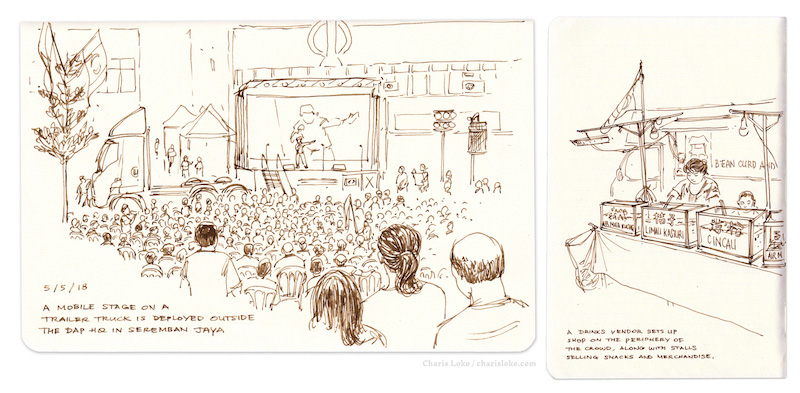
“My approach is also rooted in research and references. I the spend days or weeks looking up images and historical accounts. Nuggets of information, quirks and reference images, as well as things I’ve seen in real life add flavour to the overall illustration and inform the characters. I use a mix of traditional and digital media: the drawing is typically done in ink or graphite on paper, then scanned and used as a base for digital colours and textures.”
Loke’s most recent local work – an eight-metre wide mural for Netflix’s adaptation of Yangsze Choo’s book The Ghost Bride – may have launched her career into further prominence. But she’s also known for The Geeky Baju Project, a fantastical take on traditional garments that melds with fan art. Exploring traditional wear from around the Southeast Asian region, the series features baju designs that are representative of a character or idea from books, games and films. These avant-garde garments, reimagined with references from literature and pop culture such as The Hunger Games, Watchmen and Pacific Rim, also help expand people's conceptions about culture beyond race and geographical boundaries.
While these illustrations reflect her penchant for gaming of sci-fi and fantasy genres, Loke also sees the project as a way to advance the narratives of diversity and cultural representation in the country.
charisloke_geekybaju_dawndusk_largeweb.jpg
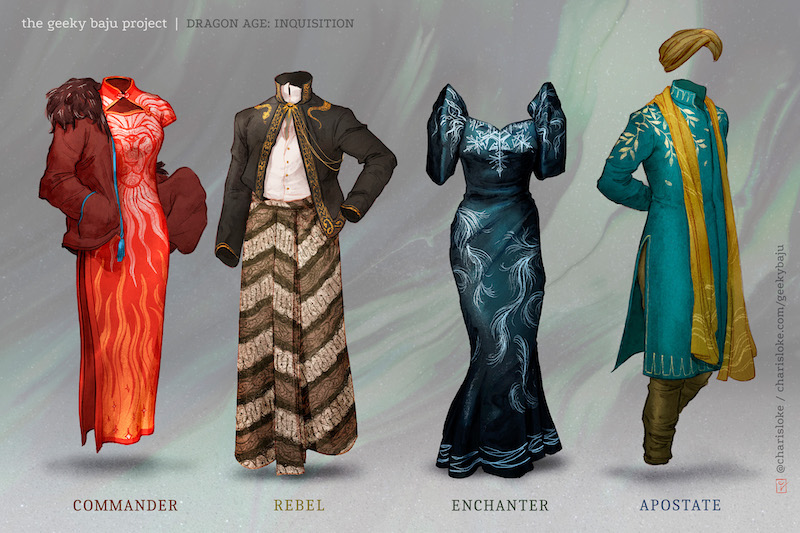
“I consider it my responsibility as an illustrator to not only be aware of how I’m depicting people and cultures in my work, but to actively push for greater representation and diversity. English-language publishing is still a very white space filled with privileged folks, which in turn affects what stories sell, who can afford to write, and how publishers market books. It’s not a question of meritocracy when the playing field isn’t, and hasn’t historically been, levelled.”
As Comics & Illustrations Editor at New Naratif, a member-funded multimedia website for Southeast Asian journalism art and research, Loke is actively seeking out and commissioning artists from marginalised groups to foster an equal creative landscape. But illustrators are still often given the short end of the stick and overlooked in press and book coverage. If books are fundamental engines of enlightenment and advancement, pictures are the lubricants that fuel the fires of imagination and intrigue.
charisloke_ghostbride_portfolioweb.jpg
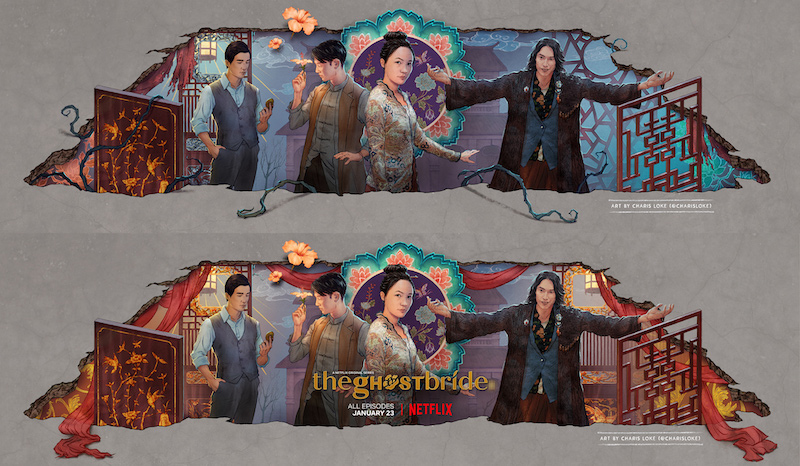
“During the Golden Age of illustration (c. 1880-1920), book illustrators like Howard Pyle and Arthur Rackham enjoyed rock star status. Things have changed since then; the 2019 Illustrators Survey found that 60% of full-time illustrators earn less than £20k annually (70% of respondents hailed from the USA and UK). For a highly-skilled profession, this isn’t great.
“Illustrators are crucial to many genres, especially speculative fiction, young adult fiction, and children’s books which rely on illustrated covers and interiors a great deal. Our art sells books, brings fictional worlds to life, and works with the text to tell the story. If I see a Tran Nguyen cover in a bookstore, I’m definitely picking that book up! And Pauline Bayne, John Howe and Alan Lee defined how Middle-Earth looks to generations of readers. Book illustrators are definitely underrated in terms of pay, and depending on who you’re talking to, in terms of respect and recognition too.”
Book illustrating is not only a specialised art form but also an industry in itself as it has engendered multitudes of success stories in the publishing world. Would Miguel de Cervantes’ Don Quixote be as memorable without Gustave Doré’s images and vignettes? What would we do without Jim Kay’s glorious depictions for the new illustrated edition of Harry Potter to fan the fantasy of our favourite wizarding world?
Book illustrators deserved to be treated as true partners in a creative process and not just hired hands. After all — as Loke aptly captures her profession and industry in her bio — a rising tide lifts all boats.
Note:
Emila's Box Library Project 2020 will be stationed at the Kuala Lumpur International Book Fair from March 27 to April 5. Readers can enjoy the content for free. For updates, see here.
Loke will be illustrating an edition of an old syair and a short graphic story about Tolkien. She's also working on an ongoing microfiction project Kejora, in which she draws stories rooted in Southeast Asian cultures and realities. Support her via monthly pledges here.


